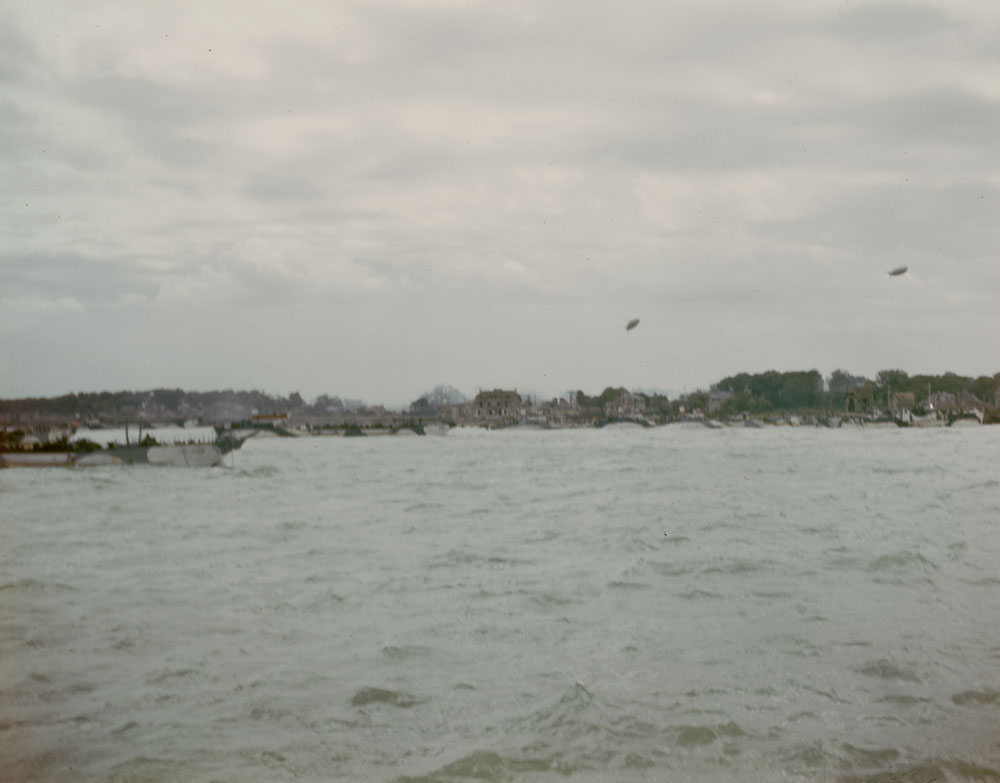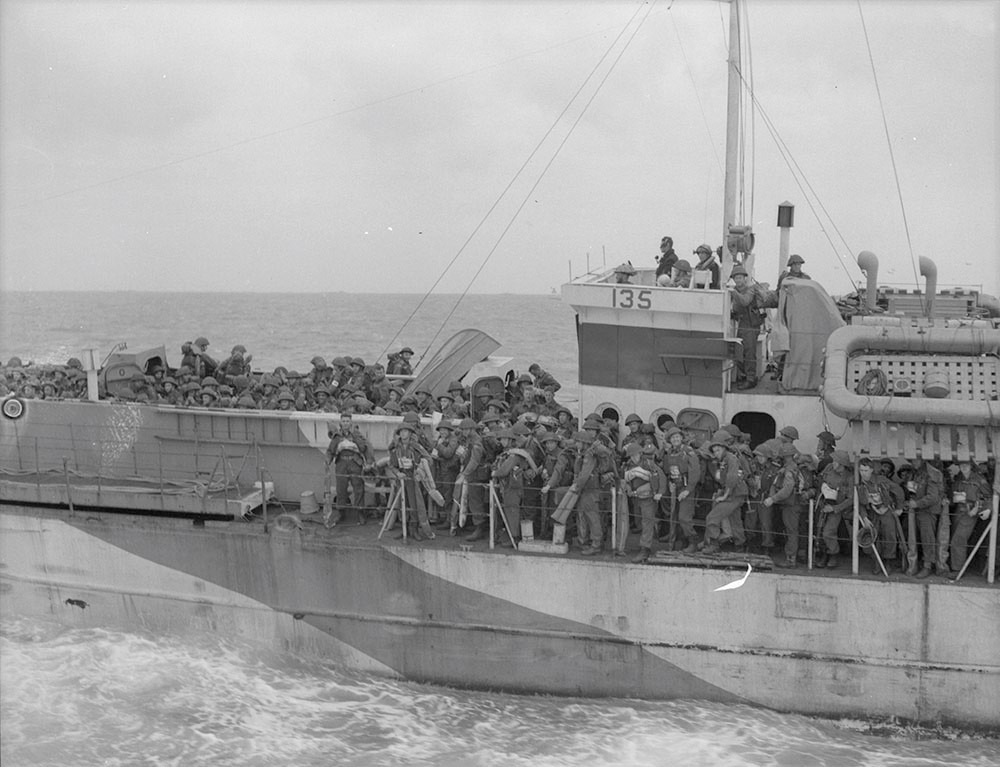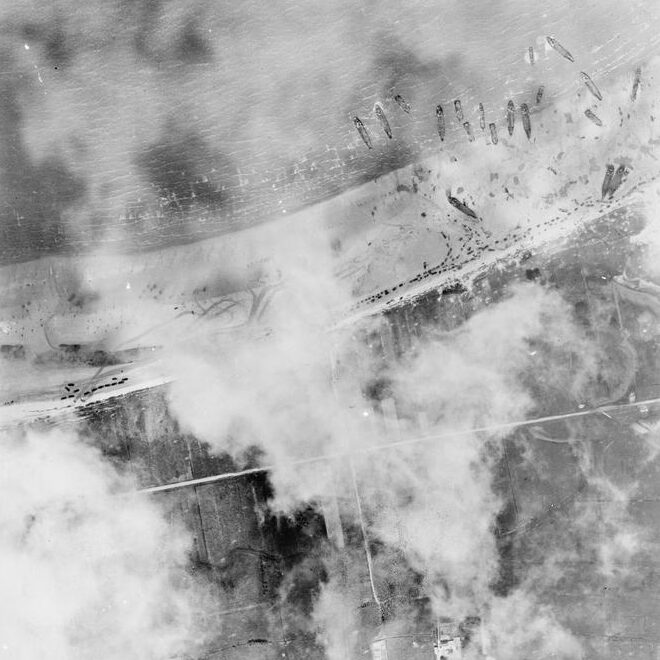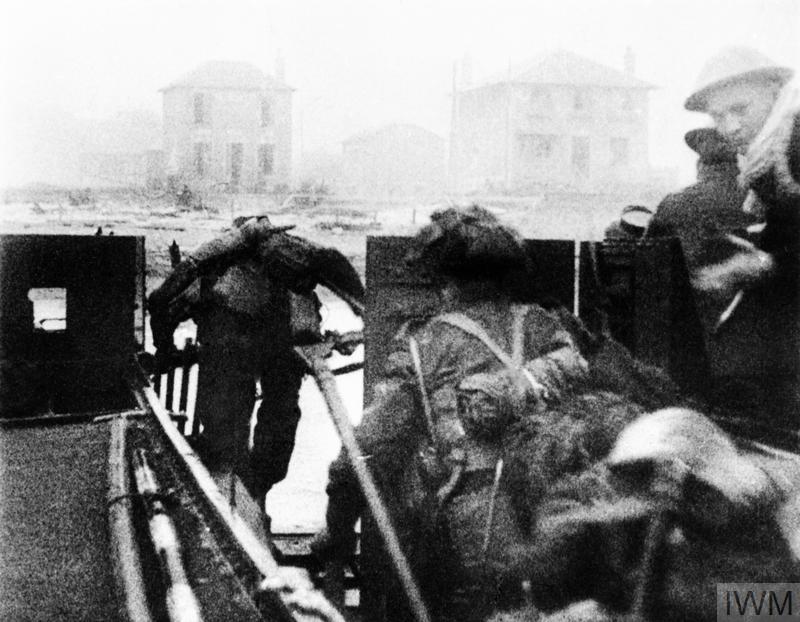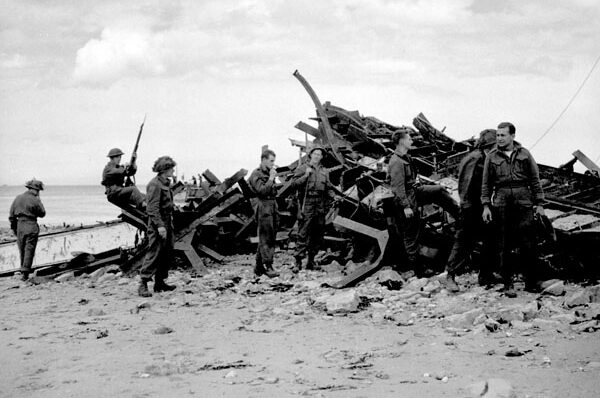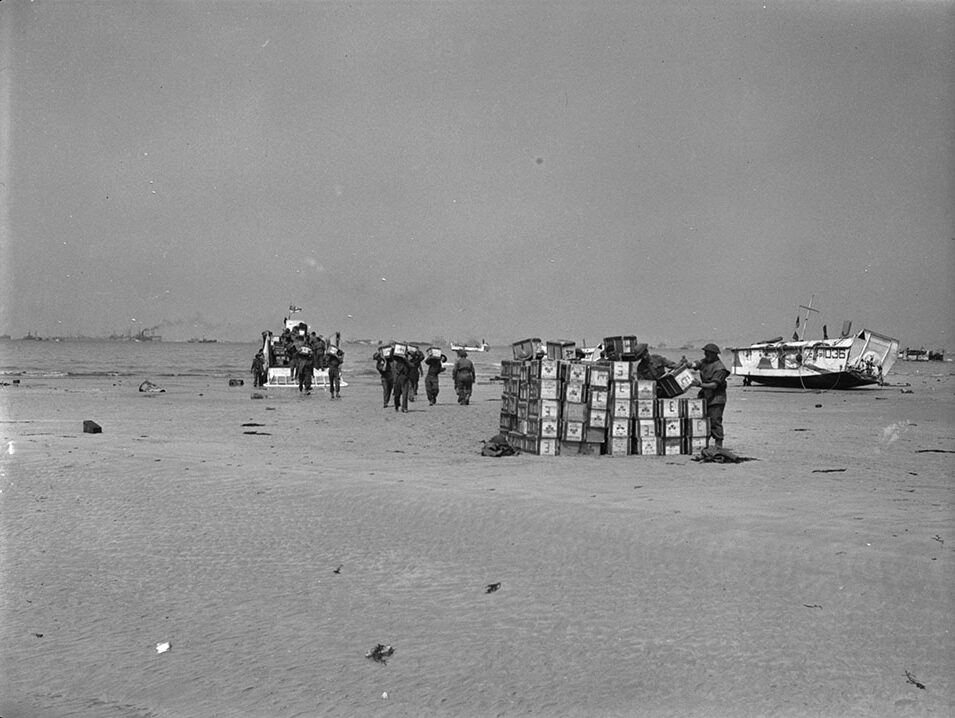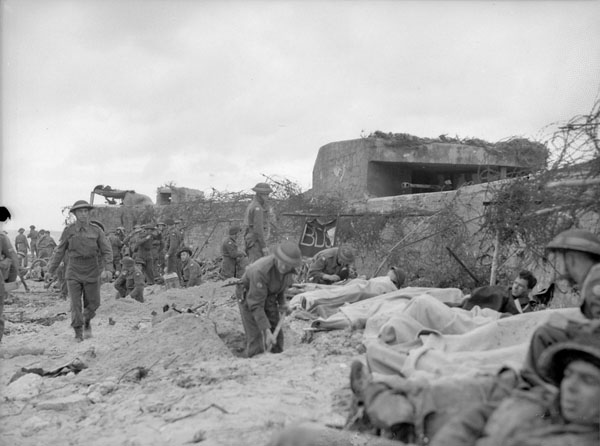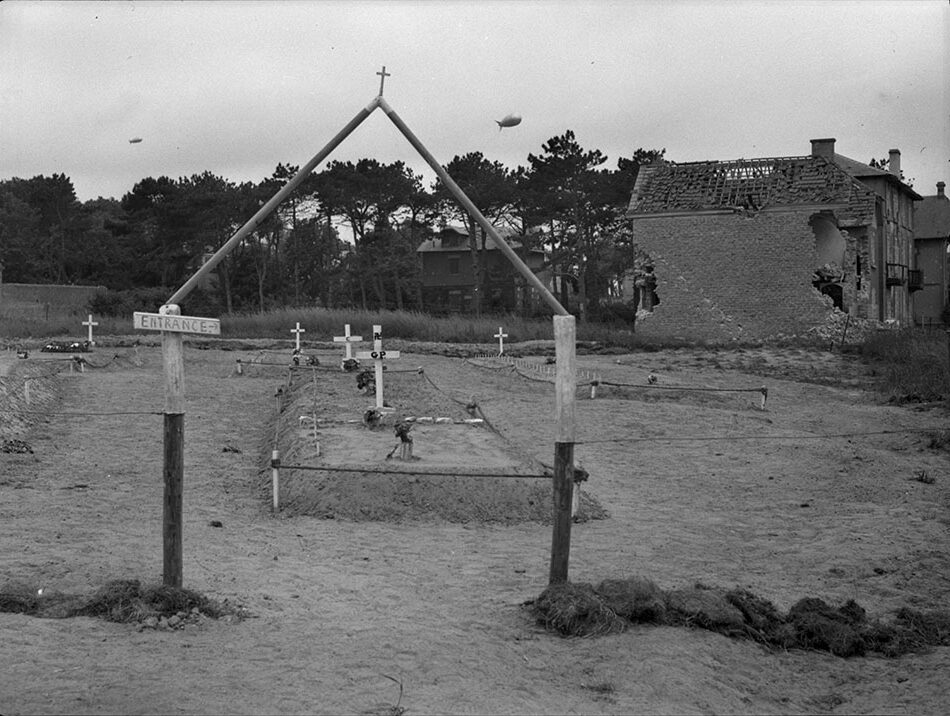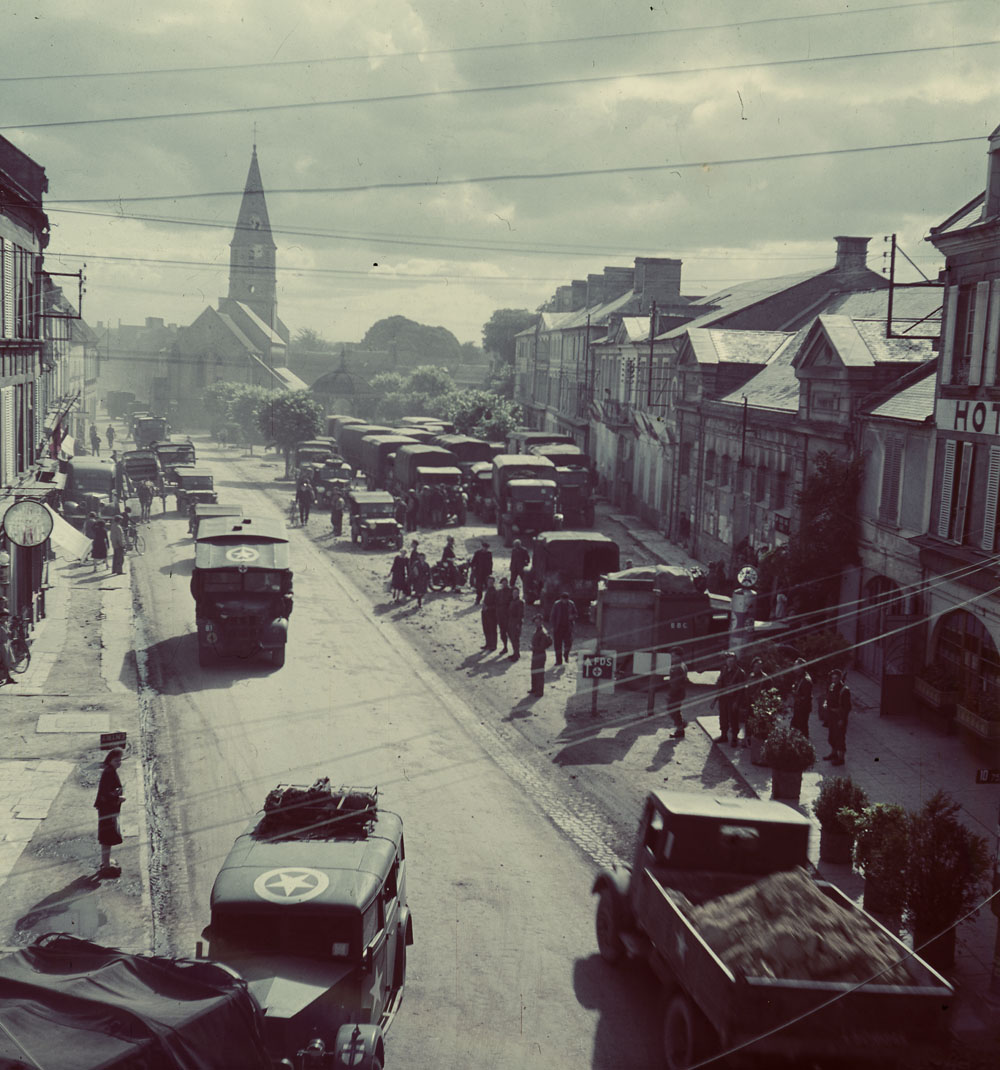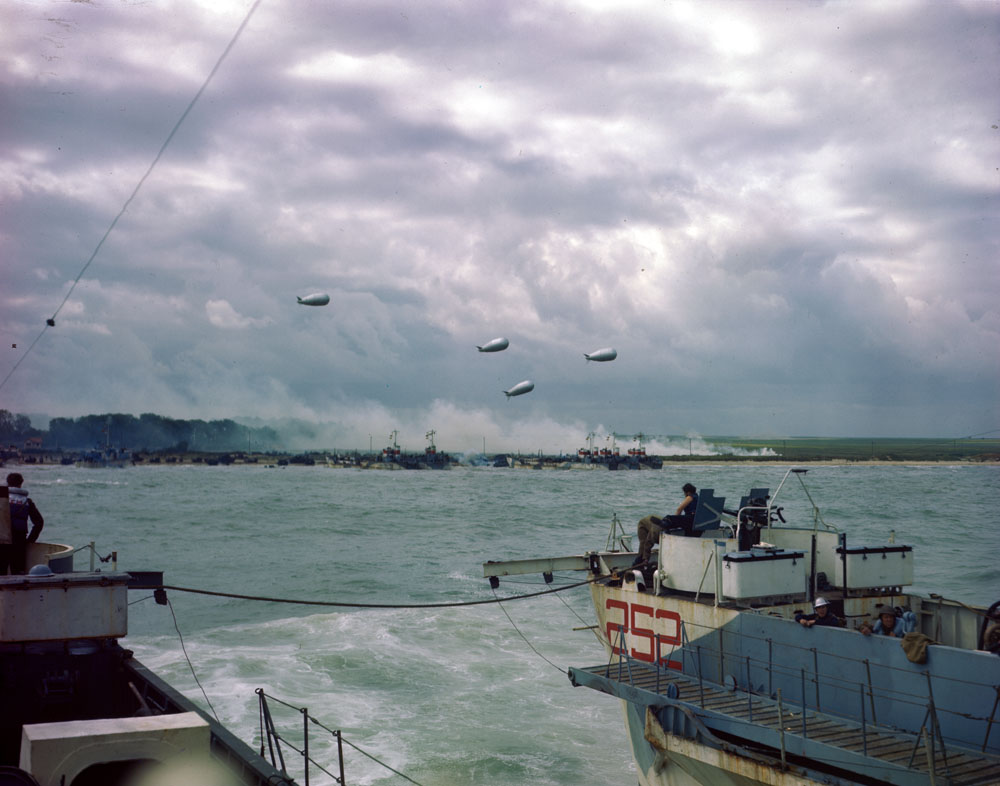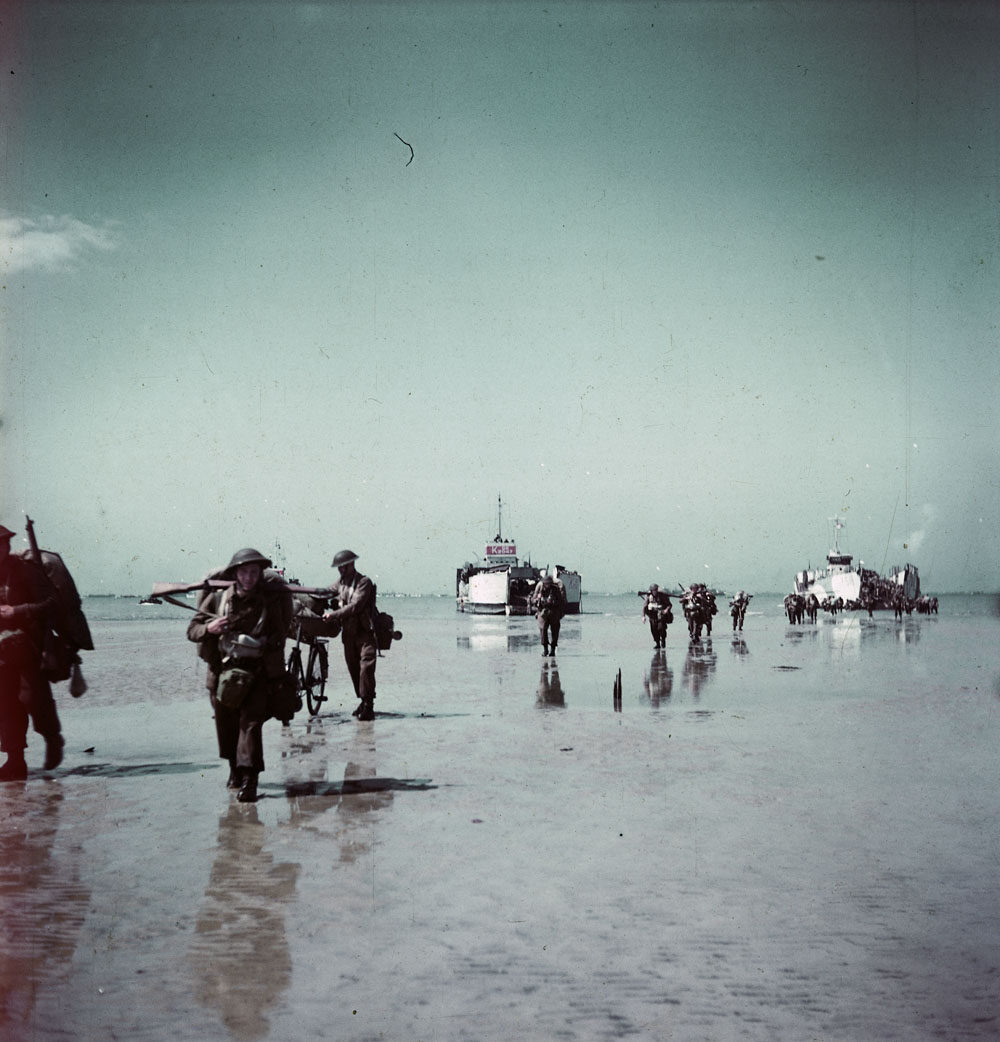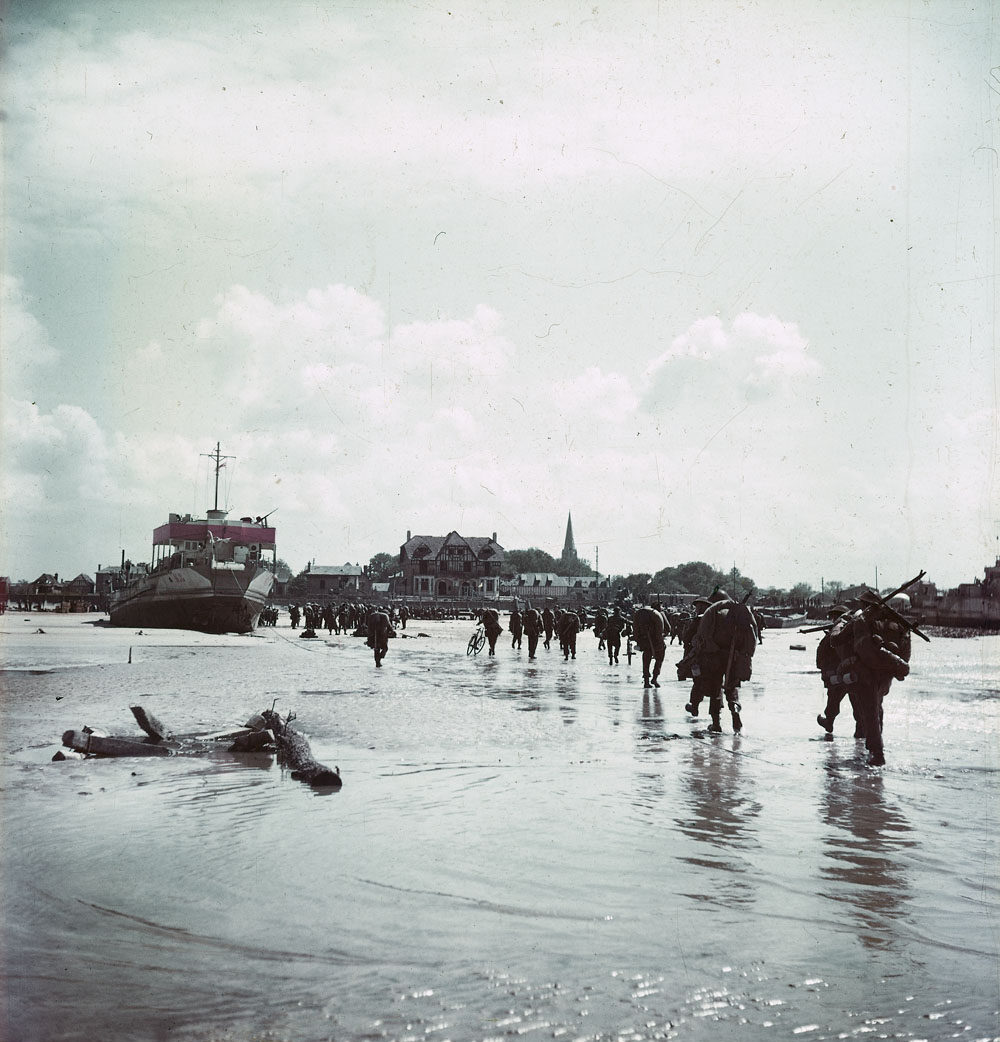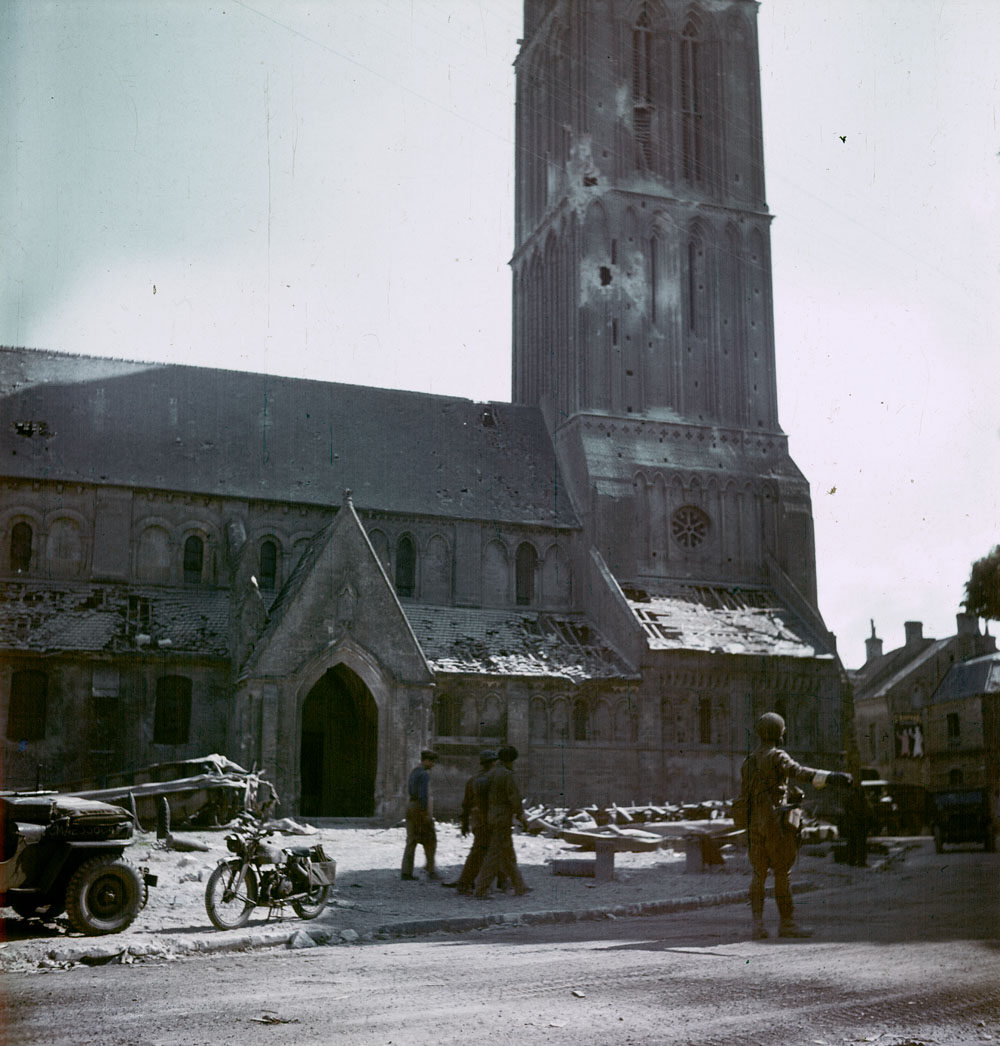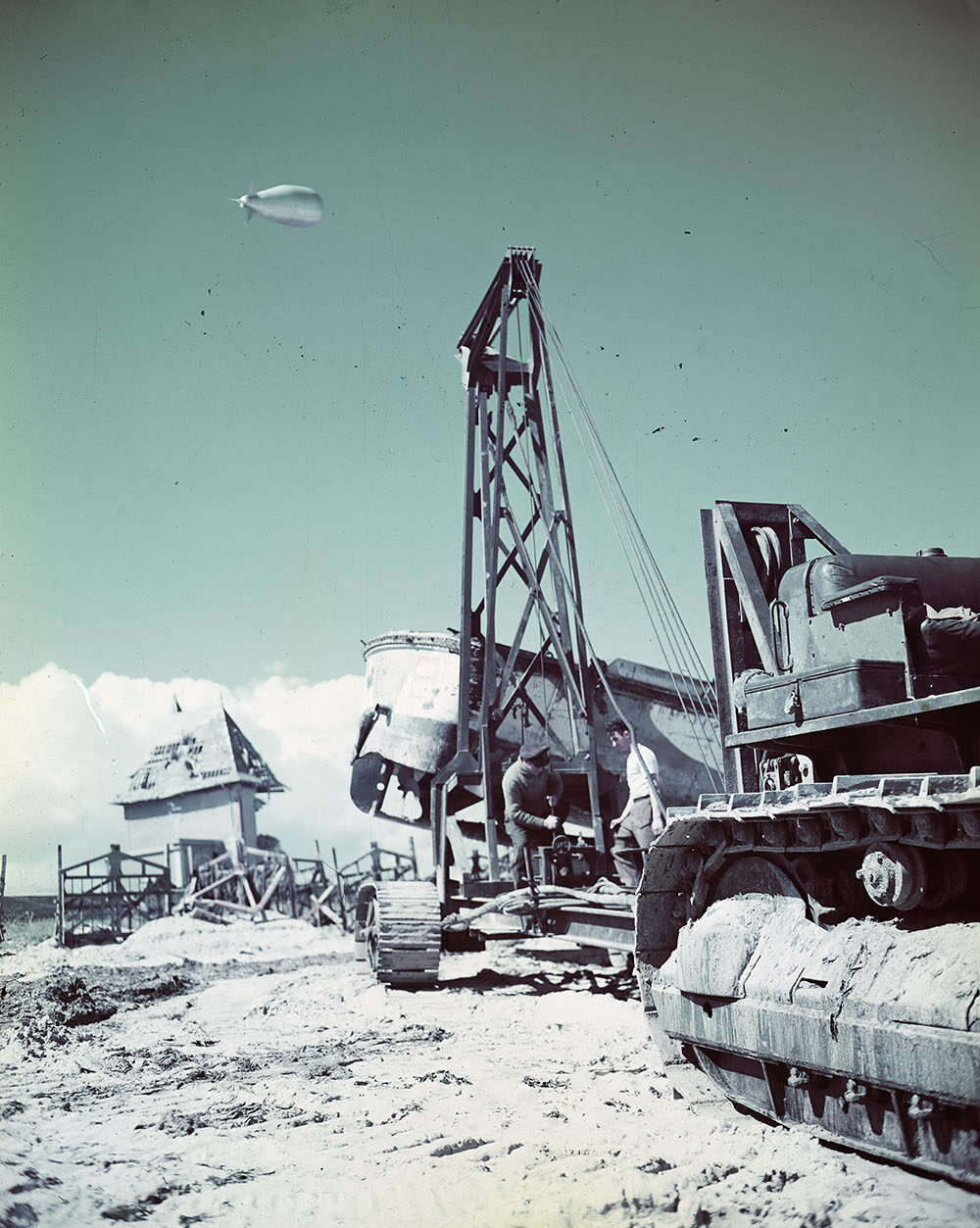From the beach to the countryside
In the early morning, the Canadian Army arrived at Juno Beach to a furious attack from the Germans. While the Allies’ air and sea bombardments were able to cover the advance of the landing ships, the enemy defences were strong. On the beach, the Canadians encountered unrelenting machine-gun fire from the Germans and contended with land mines that caused great destruction. Many ships were damaged during the landings, and the soldiers were forced to swim to shore with all of their equipment.
After capturing the coastline, the Canadians moved to Courseulles-sur-Mer, which overlooked the beach, and secured the town and surrounding villages. Despite the high casualties, the landing was a great success thanks to the sustained assaults and the soldiers’ resolve.
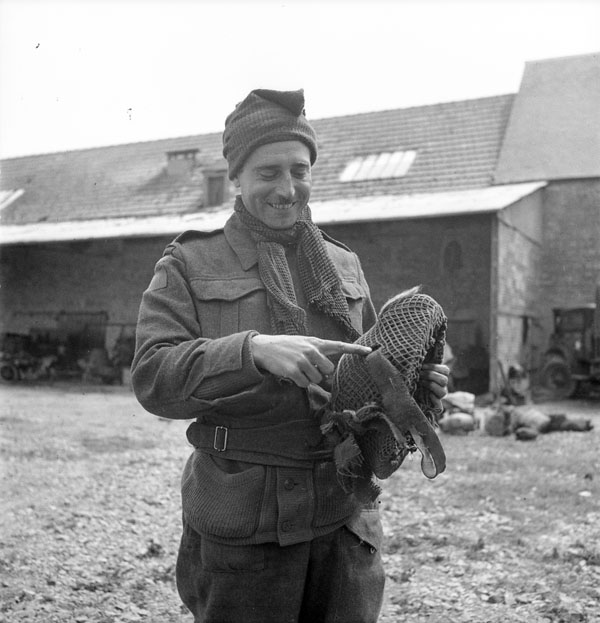
A timeline of the invasion
A soldier’s uniform
Discover: Hover over the arrows on the image below to see some of the items that Canadian soldiers carried during the Normandy landings.
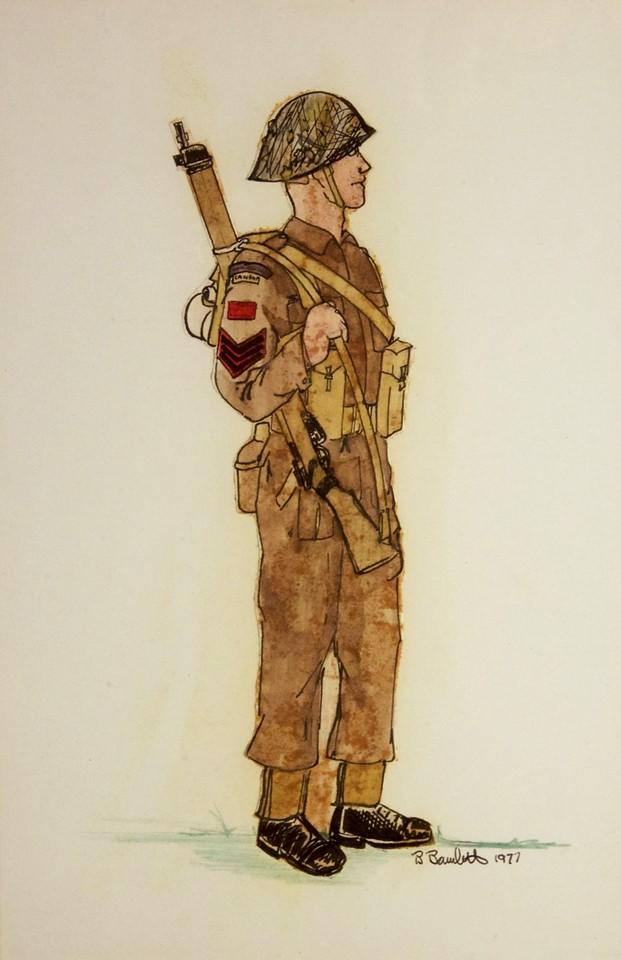
Experiencing Combat
Think: Examine the following newsreel, images and quotes about the Normandy invasion. What does each say about the experiences of Canadians on D-Day?
Snapshots of Service
Lloyd Turner
Leading troops to shore
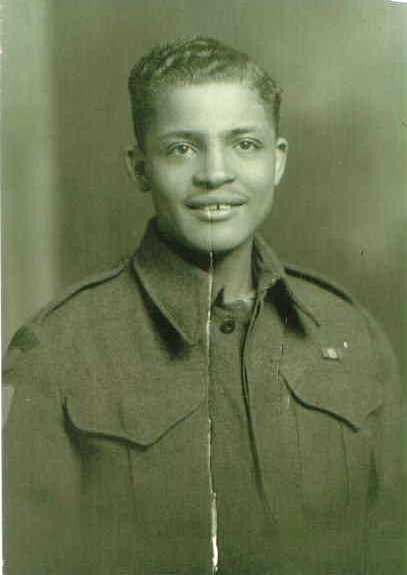
Biography
Enlisting with the Queen’s Own Rifles, Lloyd Turner quickly rose through the ranks to become sergeant. At Juno Beach, he commanded part of the regiment’s troops and faced German machine-gun fire. His account of the Normandy landings is striking, as he describes in detail the conditions on the beach and the damage caused by enemy defenses. After fighting almost everywhere in Europe, he was wounded three times in all, and learned of the end of the war in a Belgian hospital. Until his death in 2002, Lloyd was married to his wife Rose Anne Pether and had two children.
Herman Stock
The Ultimate Sacrifice
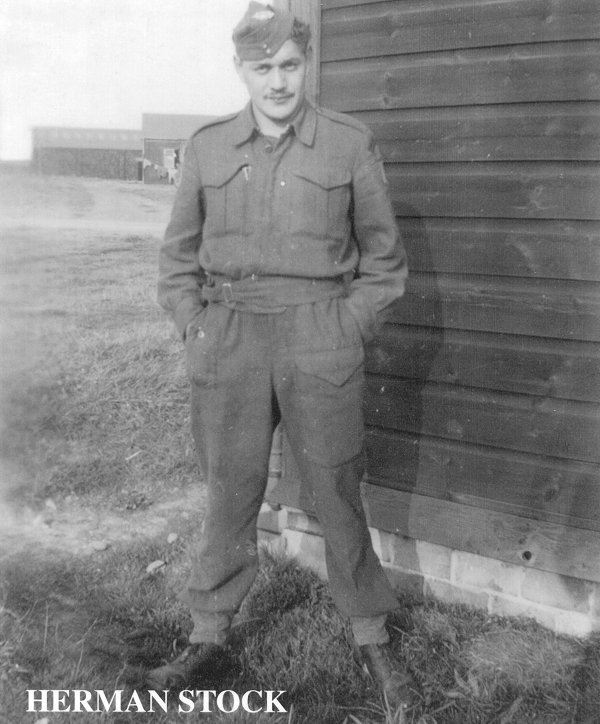
Biography
Herman Stock was born in Sahanation, Ontario on Wahta Mohawk Territory in 1922. He enlisted in 1941 and was at Juno Beach with A Company of the Queen’s Own Rifles. Unfortunately, A Company endured heavy machine fire as they arrived on the beach. Within moments of arriving at the beach, Stock was killed. He is buried At Beny-Sur-Mer Canadian War Cemetery.
Bertha Annie “Bertie” Hull
Caring for the wounded
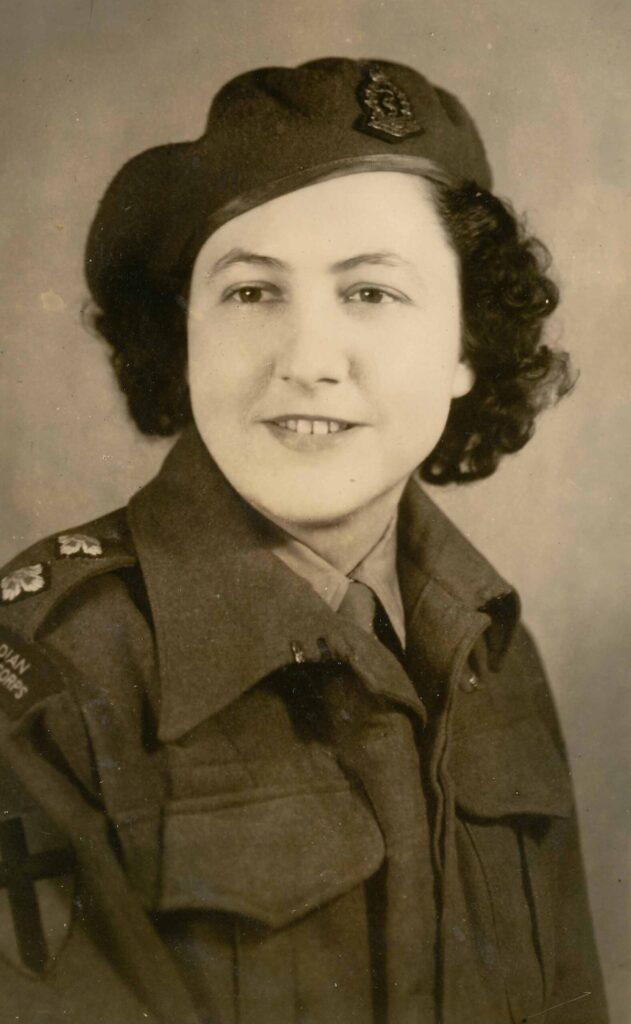
Biography
Bertha Annie “Bertie” Hull was born in 1917 in Winnipeg, Manitoba and served as a nurse during WWII. She enlisted in Halifax and was sent to England to join a team of 50 nurses who were responsible for a 500-bed hospital. She was in England during the Blitz, as German bomber planes flew over the hospital where she was working. When D-Day came, Bertie and her team were ready. She later recounted that D-Day was a sad time because the injured soldiers and officers that were returning from France were men she knew and may have danced with. Bertie continued her career as a nurse after the war, working at Sechelt Hospital in British Columbia for 35 years.

